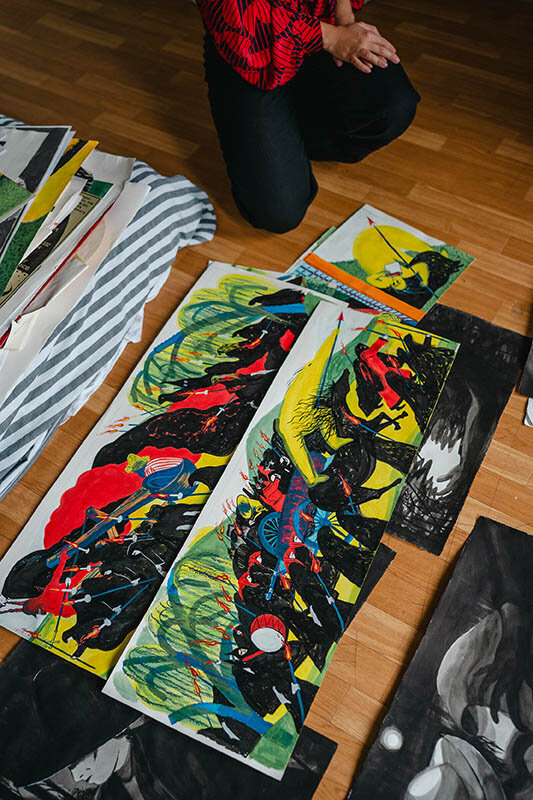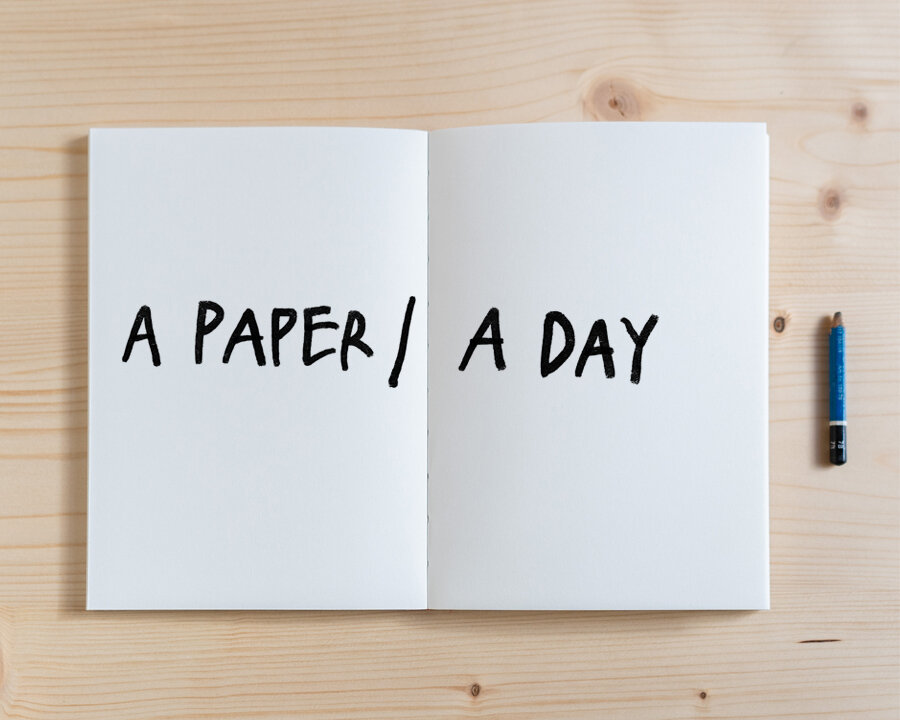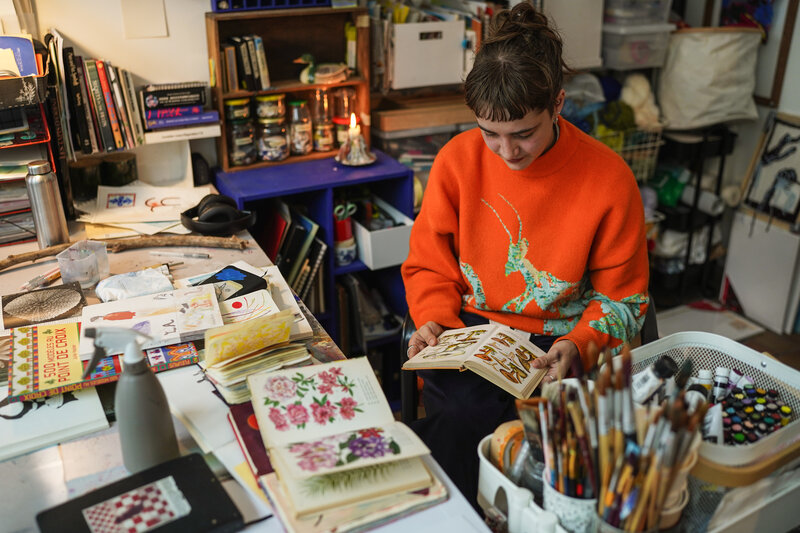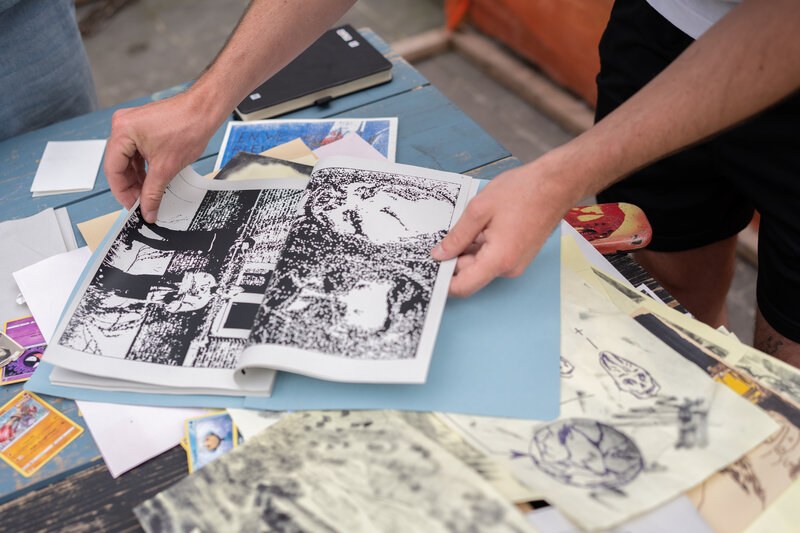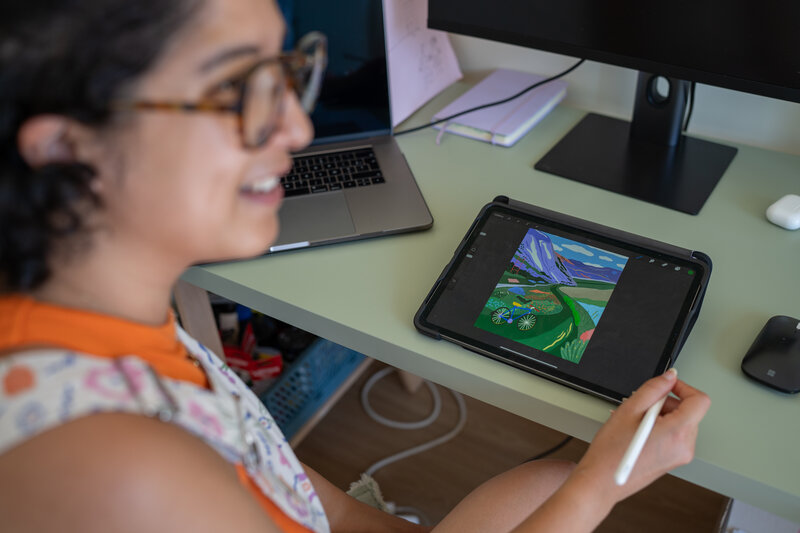Dive into Maria Farré's black-and-white world
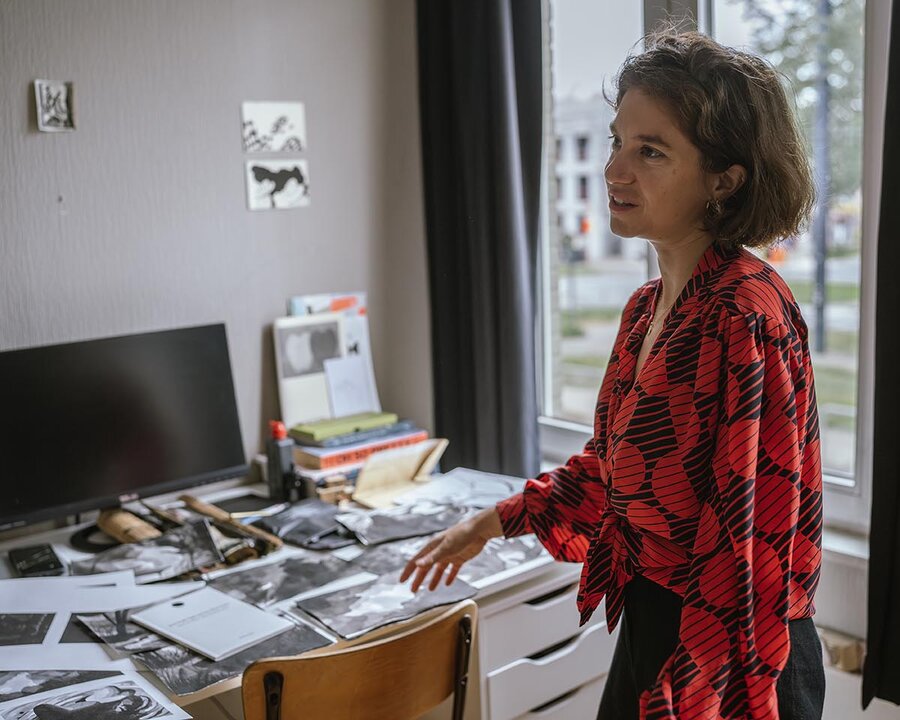
For Maria Farré, a new way of working unfolded when she exchanged her permanent workplace - a desk - for an outdoor bench, with a sketchbook in her hand. The series of sketchbooks, bursting with ink drawings in every possible shade of black, marked the beginning of a new working method. For A paper / a day 2023 we could have a look into her black and white world on paper.
We see a pile of sketchbooks: how did you get hooked on sketchbooks?
Maria: "Actually, I only started drawing in a sketchbook last year. For my master project in LUCA, I felt I needed to expand my visual language. After my studies in 'Arts and design’ in Spain, I worked mainly on commissions for press, magazines, music, posters,... This kind of work was very direct and quick. But for my master in Illustration, I needed to add new elements to my visual language, and for this, I had to change my way of working. Normally, my desk is my ideal working spot. I love to work there, concentrated with my music in the background and without anyone disturbing me. But for this master project, I left my comfort zone. I went outside and - although I felt as if I was being exposed - I quickly found the fun in observing and drawing. It surprised me how many things came out of this way of working. It provided new input and unexpected discoveries."
"My sketchbooks are filled with all black ink drawings. For two reasons: because Chinese ink was the easiest technique to carry with me, and because I needed a focus. By narrowing it down to black and white, my attention is more centered in the act of reinterpreting what I see.
I always take two tiny glass jam pots with me, one with only black ink and another one with some ink and some water. I could play with the grays, I experimented with contrast, shadows and volumes."
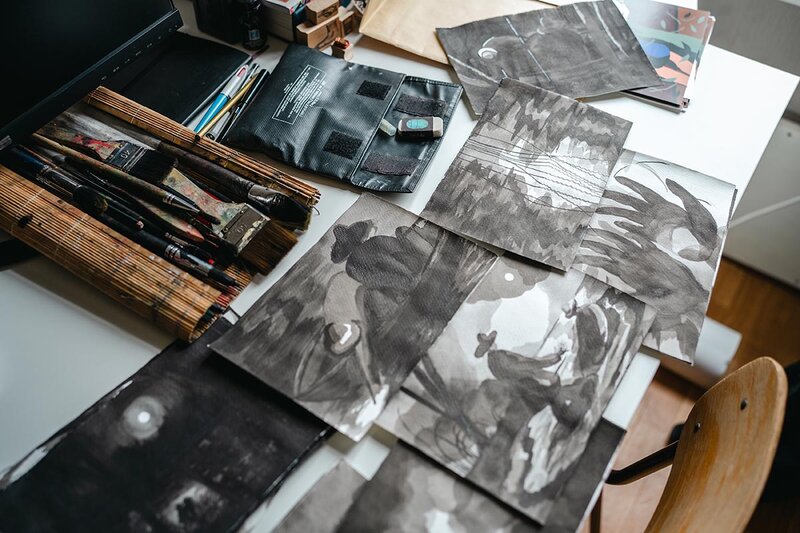
"I like to be direct in my drawings. I draw fast, and then move on to the next page. Directly with ink, because it doesn’t really have the same movement or freshness when I construct the lines first. It’s only after a few days or even months that I look back. Then I read my drawings a bit differently. Some drawings I like better than I remembered. Over the pages I don’t like, I paint a new layer. So the drawings evolve through the days, and I see my progress in this books.
By working like this, I learned to lose the fear of the blank page. After some time, I started to say to myself: it’s just paper, just go over it if you don’t like what's on it."
Can you tell us something more about your master project?
Maria: "First, I just started collecting everything around me. Especially the interactions between people: I'm interested in the idea of polarity and opposites, the tension between characters and the love/friendship relationship that evolves. How are two extremes distant and complementary at the same time? This topic has been there for a long time.
The difficult part was to jump from my sketchbook to a final shape, without losing the freshness of the sketchbook. I made a series of drawings, in the size of my sketchbook, about two characters having a journey at night. Because I wanted to control these techniques, this atmosphere, these characters, I repeated all this many, many times. The storyline of the drawings is loose: they are all separate drawings, and the dynamic composition defines the story. That can differ each time."
Where do you get your inspiration?
Maria: "I have a lot of visual references, but I also find inspiration in literature, music and cinema. I am mainly interested in translating certain concepts or atmospheres from other mediums into images.
For this master project, my inspiration mainly came from ‘Difficult loves’, a book with short stories from Italo Calvino about impossible loves. I already had this book in mind when I was observing the interactions between people. How do they talk? How do they sit together? Actually, when I go outside, my mind is quite open but I already have a bit of an idea on what I want to observe."
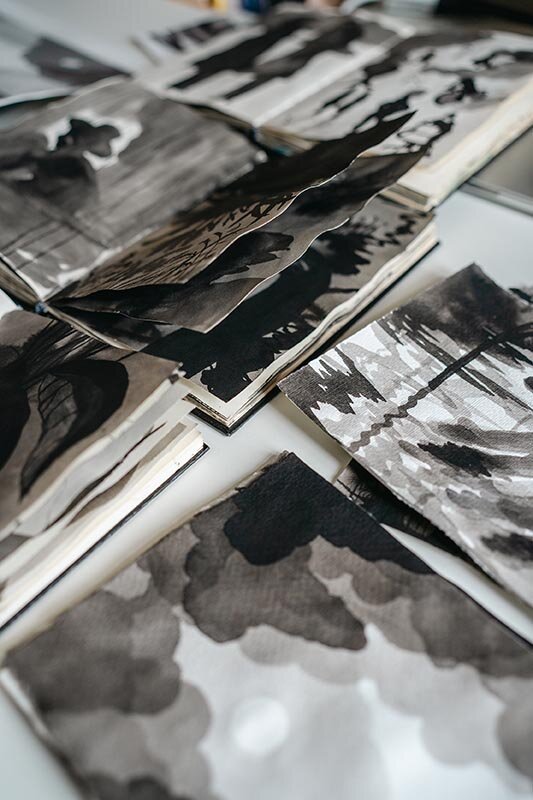
Do you still work in a sketchbook?
Maria: "I do. It’s an ongoing project. Now I’m experimenting with the transition of this new language to the work on commissions. For my commissioned work, I need to work faster. So how can I connect this sketchbook process with deadlines, when it's not only about just one vision? How can I keep this analogue movement in my commissions too?
But I already feel the influence of my sketchbooks in my commissions now. I like to watch the sketchbooks: they contain a huge collection of drawings, which I find very helpful to have."
Do you have more plans with this drawings of your master project?
Maria: "Well, I enjoy working on big formats. The huge size brings a lot of movement in the drawings, it gives a freshness when you use your arms and whole body in a drawing. A sketchbook is quite the opposite, it is private and small. To jump from this little book to an open, big mural: it can be a nice next step. Or maybe a selection of this drawings can be bundled into a book. I feel like the research didn’t stop after I finished my master, it is still going on."
